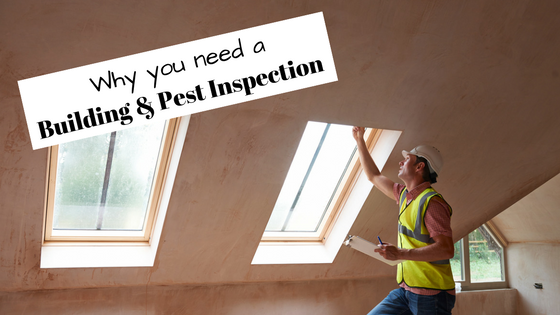Why You Need A Building And Pest Inspection
By Shane | Uncategorized

Building and pest inspections are for the purchaser to identify any potential issues including building design faults, potential safety issues including cracking or structural defects. It also includes timber pest activity. Timber pest activity is essential. It includes moisture, mould, termite, decay, and borer. These issues can unfortunately have an effect on the value of the property you’re purchasing.
Obtaining a report can provide assurance that the investment does not have major issues. Major issues such as termite damage can cost up to tens of thousands of dollars to repair. If its structural, the cost can be a lot more. If a property has had previous termite damage, an experienced technician will be able to advise if the appropriate measures have been put in place to reduce the ongoing recent further attack.
Also, having a license builder to inspect will provide you with the right tools and information to negotiate or evaluate. It is advised to get your inspections done before settling. This will ensure you have a greater negotiation opportunity if issues are identified.
So, what are the essential parts of a building and pest inspection?
Engaging a two-man team, including a license builder and also a licensed timber pest inspector, with both having had experience in the industry. Inspectors should have had experience training termites and also have a knowledge about ecology and behaviour. Inspections should include the roof point, subfloor, externals, outbuilding, and so forth.
The inspection will take a two-man team approximately one to one and a half hours or more. A thirty-minute inspection is not good enough. Ensure that the company you engage is a licensed builder and licensed experienced team of pest technicians.
Understand the fine print.
There isn’t an Australian standard that specifies what should be included at a minimum in an inspection report. But different inspectors use different styles of reports depending on how much you’re paying. A basic report should consist of at least ten to twenty pages including photographs outlying areas of concern, and also providing recommendations.
A visual inspection should be carried out to Australian standards. Minor defects are not generally included in reports. Some of these minor defects include stains on carpets or scratches on the walls. However, if there are quite too many issues, they may become a major issue. Inspections are visual. Inspections don’t remove insulation, furnishings, and stored goods.
The inspections are designed to identify major defects. However, more invasive detailed inspections are available and investors should notify the inspector what concerns they may have. Say you’re aware that the property has had previous termite damage, it’s always a good idea to notify the inspector. A good inspector will happily discuss the results with the client in addition to supplying a written photographic report.
Always seek an independent building and pest company. Most houses have minor faults. It is important for the investor to understand that you generally what you pay for and in saying so, be aware of what you’re paying for. Some properties, unfortunately, do have major defects. If a building and pest inspection aren’t carried out and these defects are identified after sale, it can really cost you much. So, be sure to book a building and pest inspection before settling in.
Session expired
Please log in again. The login page will open in a new tab. After logging in you can close it and return to this page.